Community Health Assessment: CVD Risks in African American Population
VerifiedAdded on 2021/04/19
|13
|910
|464
Report
AI Summary
This report presents a community health assessment focusing on the cardiovascular health of African Americans. It details the assessment process, including data collection through surveys and secondary data analysis from sources like the American Heart Association. The assessment identifies key findings such as a lack of awareness regarding heart conditions and high prevalence of risk factors like high blood pressure and diabetes within the African American population. The report highlights significant disparities in cardiovascular disease outcomes, including higher death rates, and discusses contributing factors such as sedentary lifestyles and obesity. The findings are intended to be disseminated to healthcare professionals and community health workers to increase awareness and inform the development of targeted interventions and strategies to address the health needs of this vulnerable population. The report also emphasizes the importance of inter-professional collaboration and in-service training programs for healthcare teams to improve care delivery.
1 out of 13
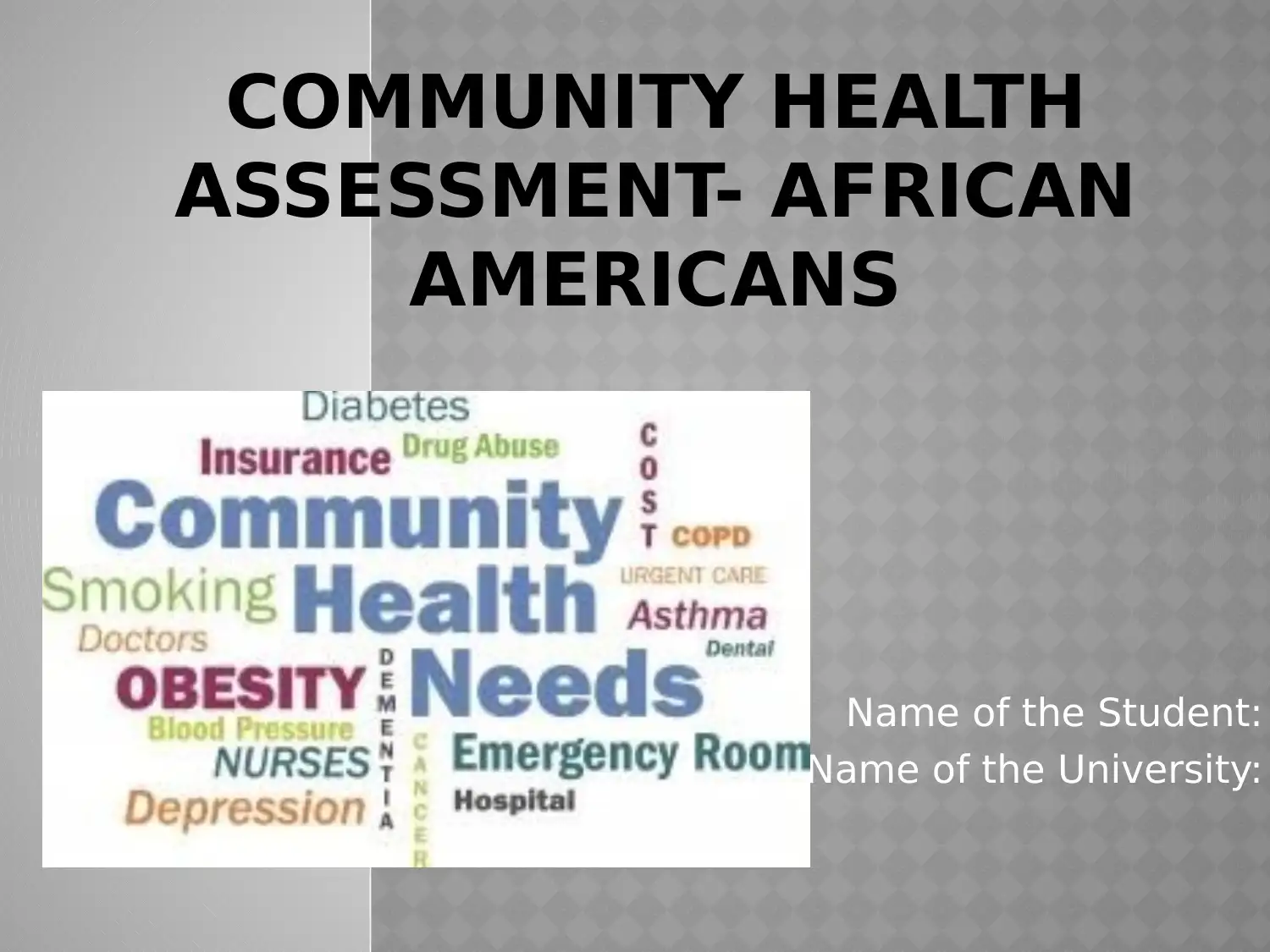
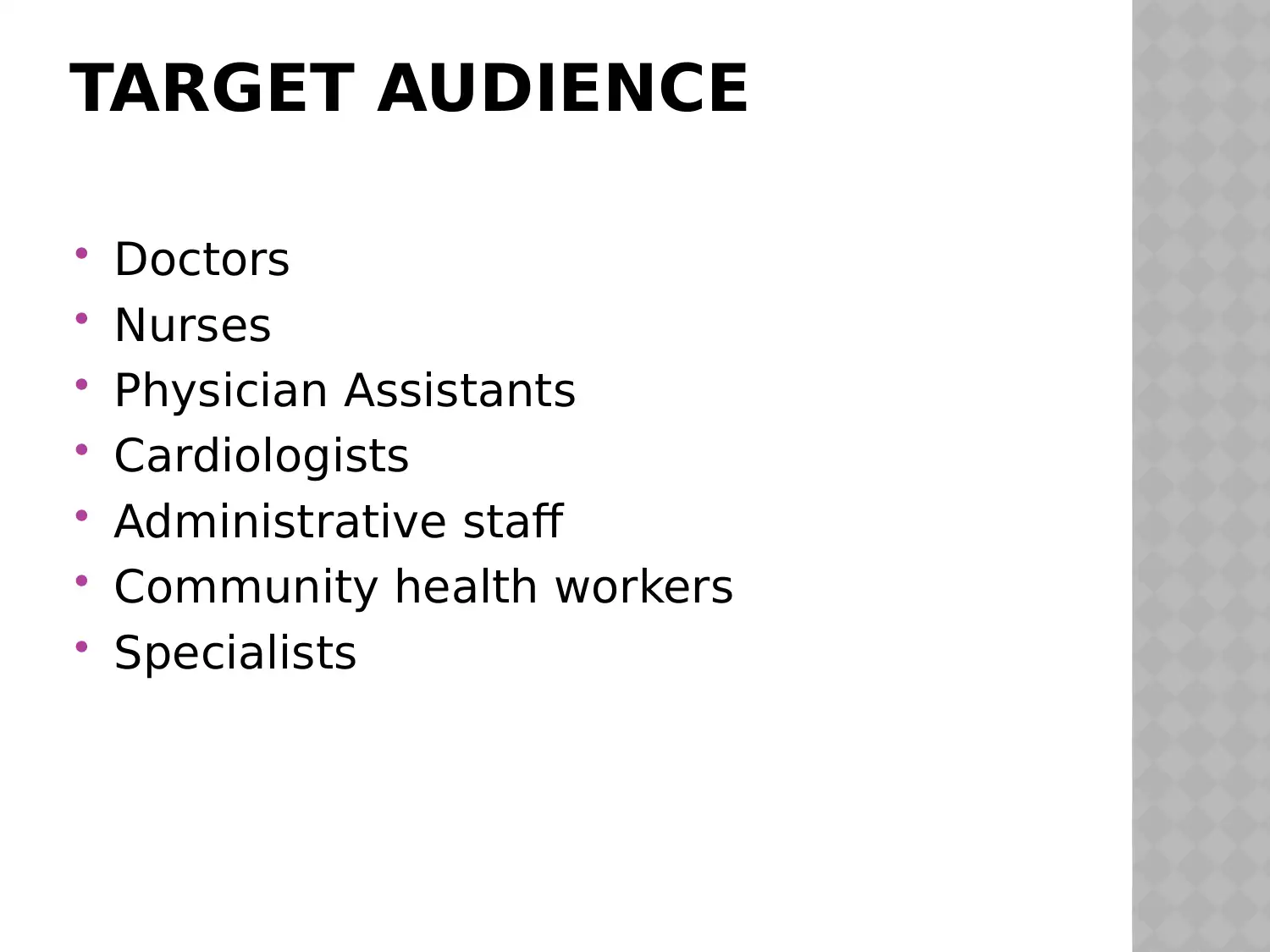
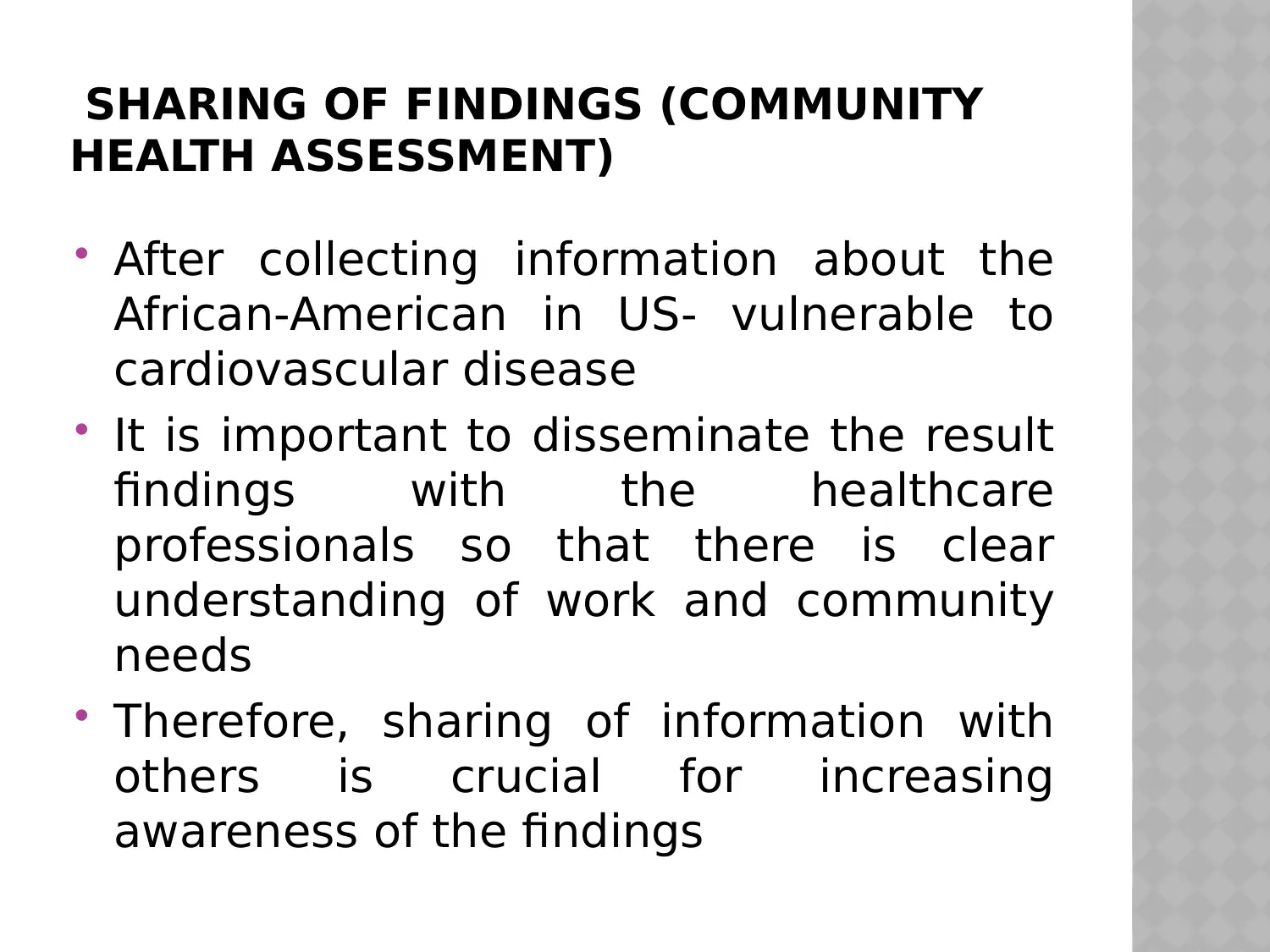

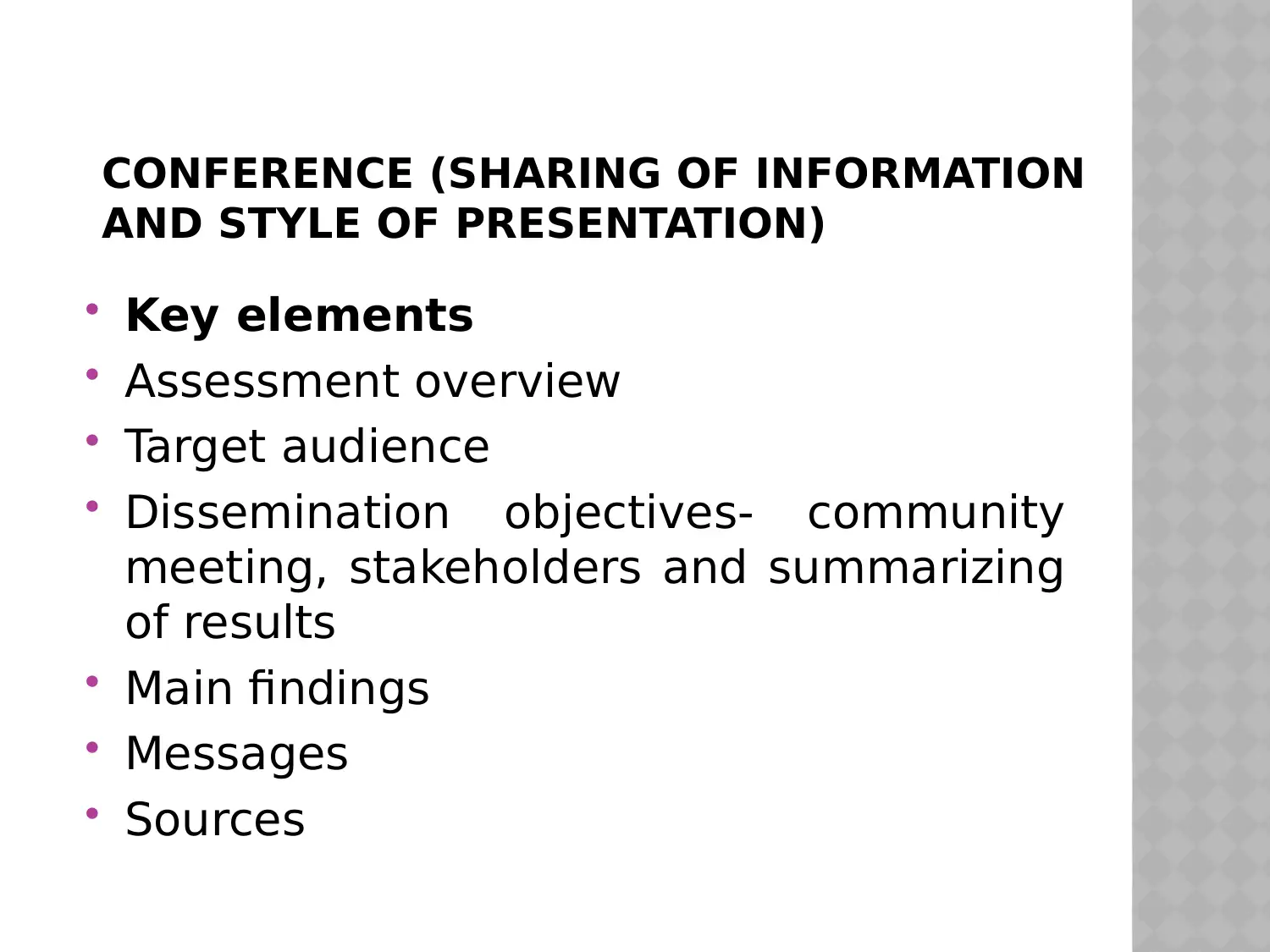
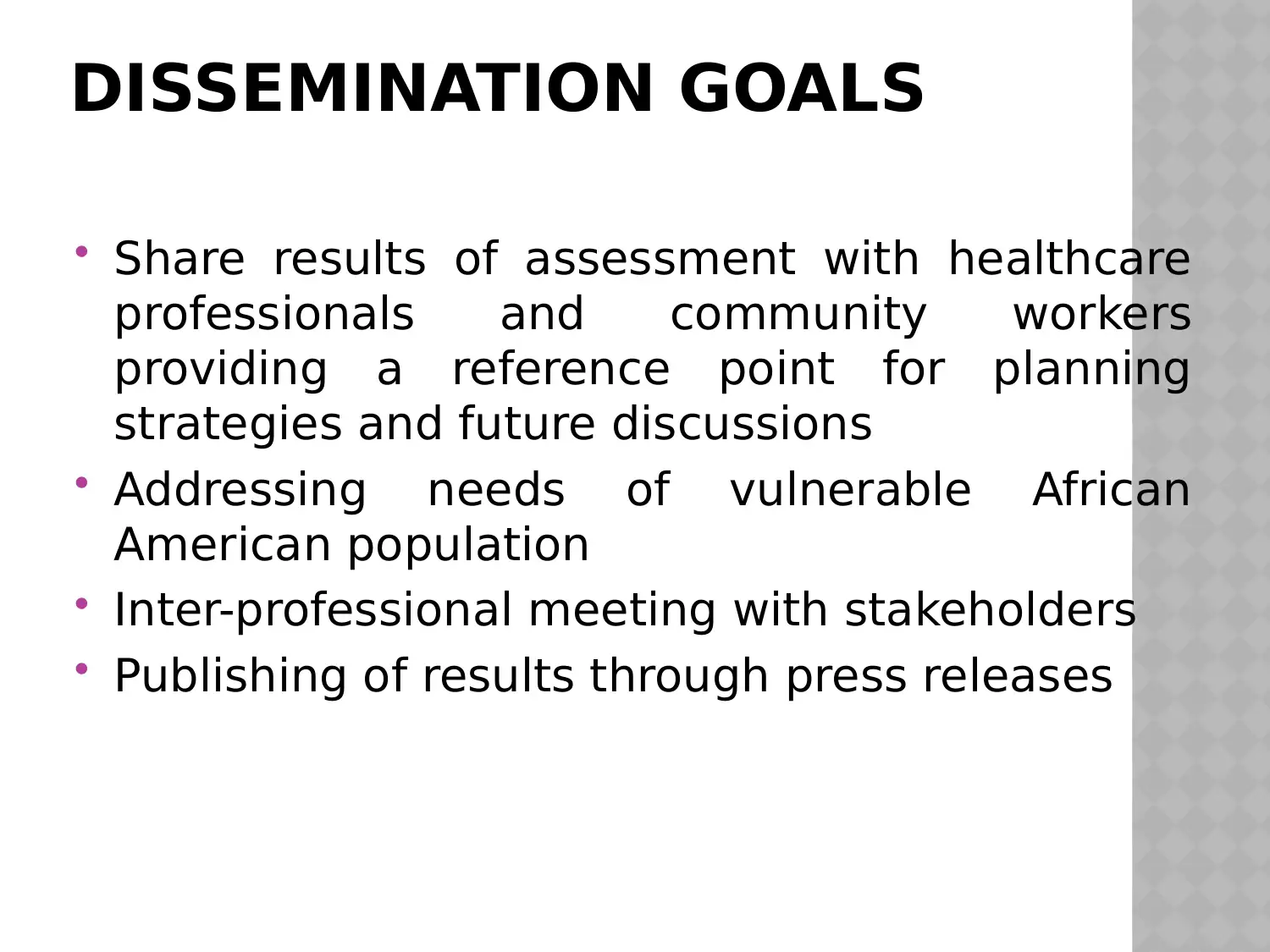
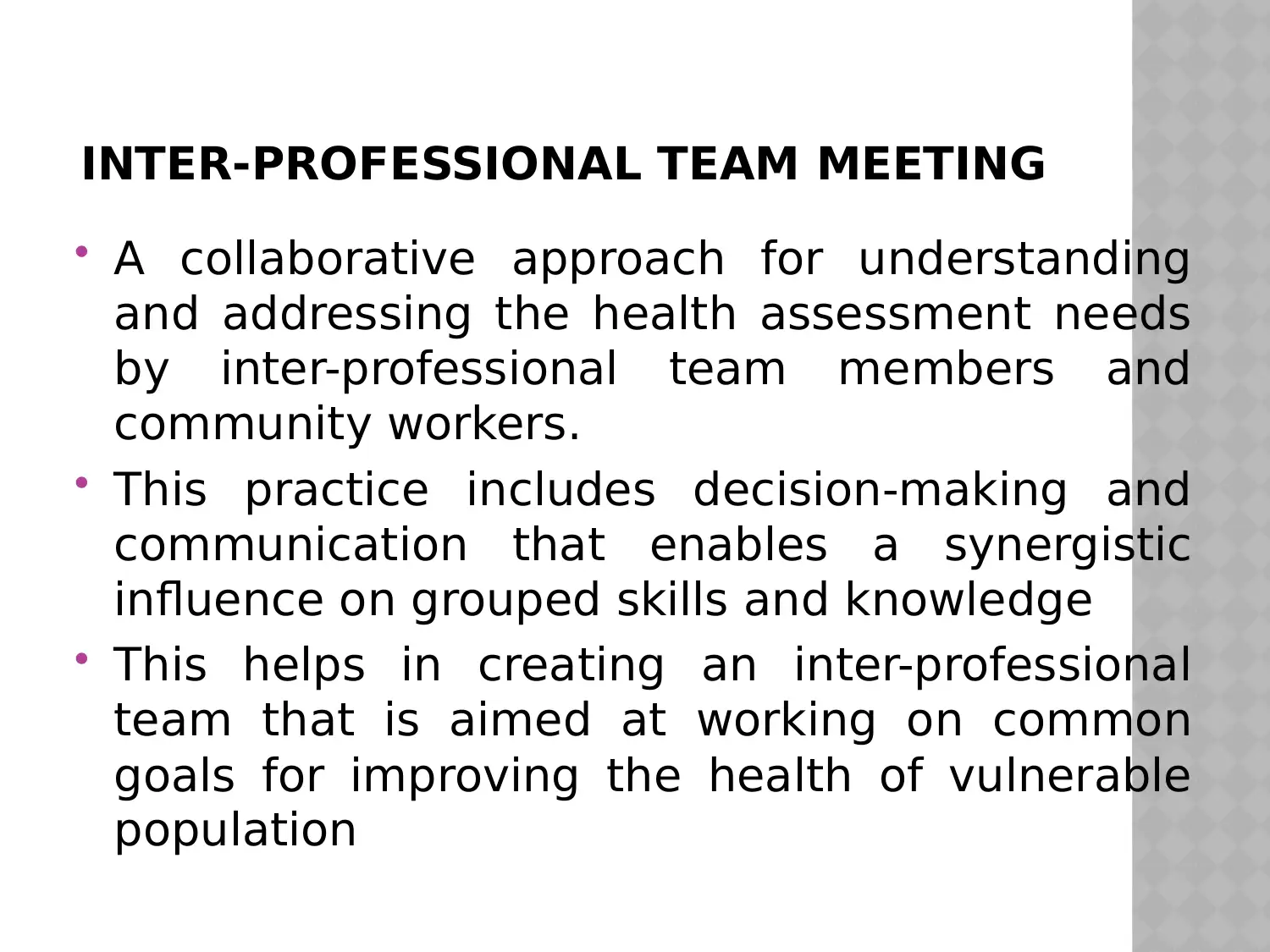
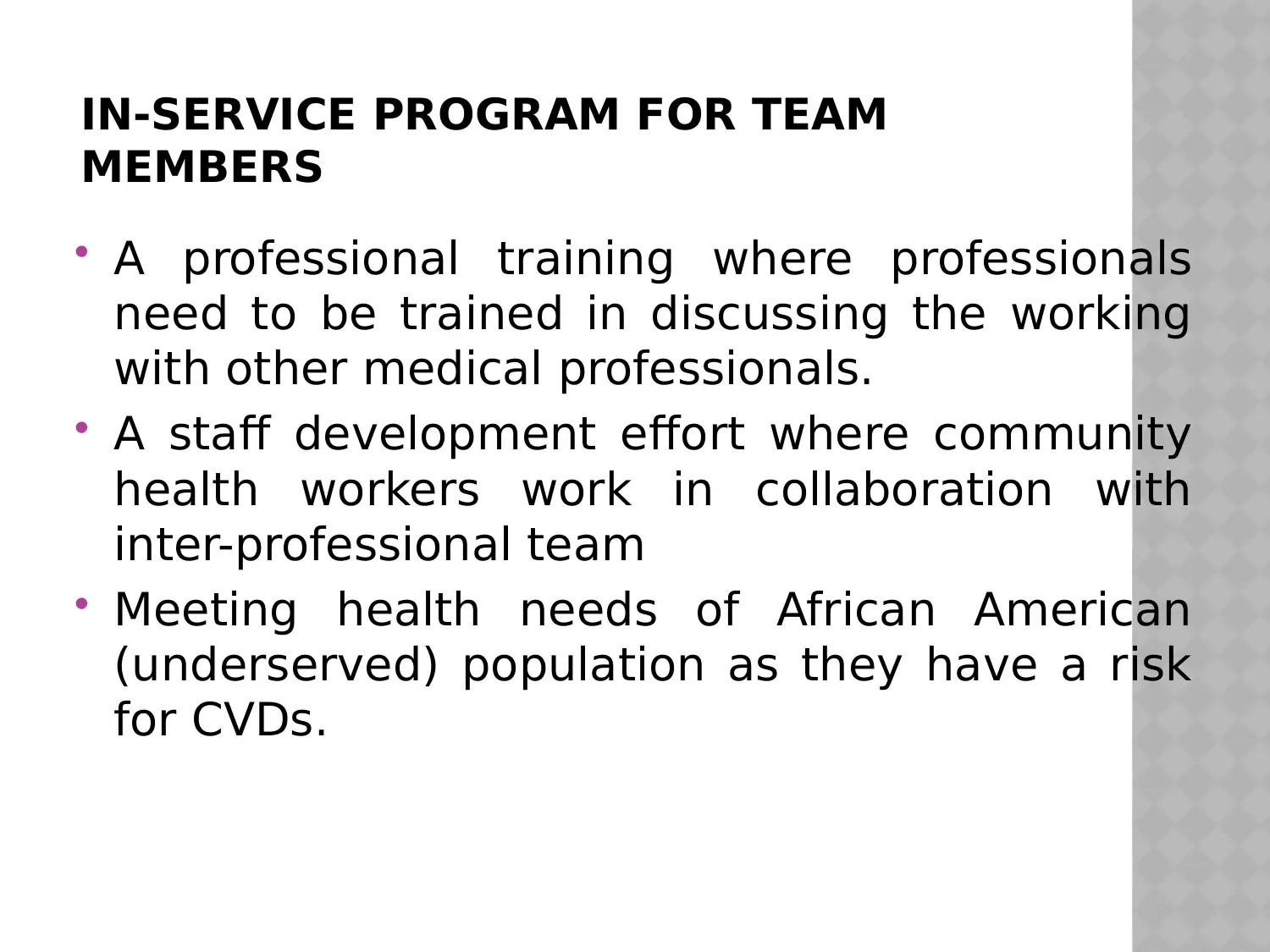
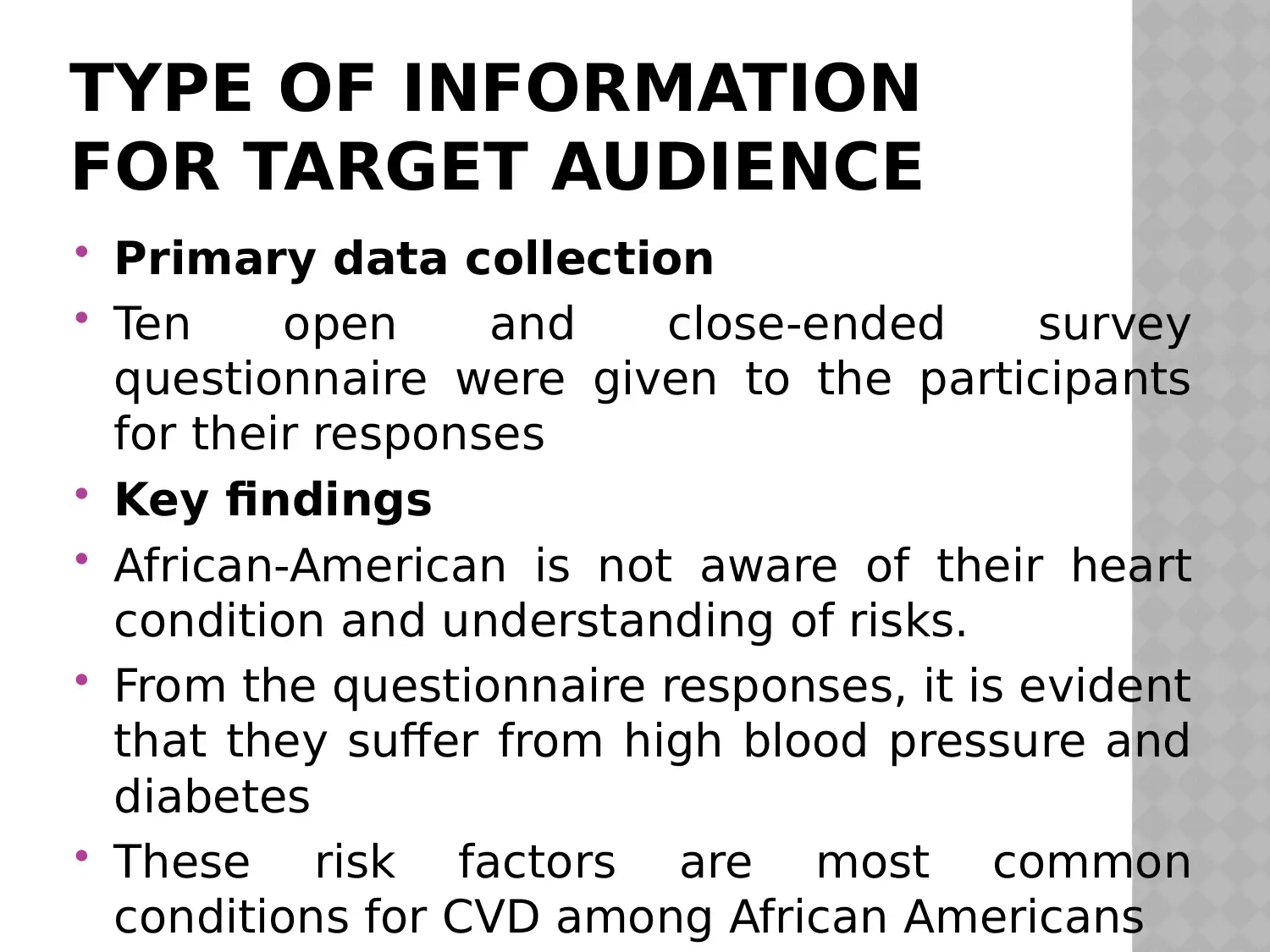



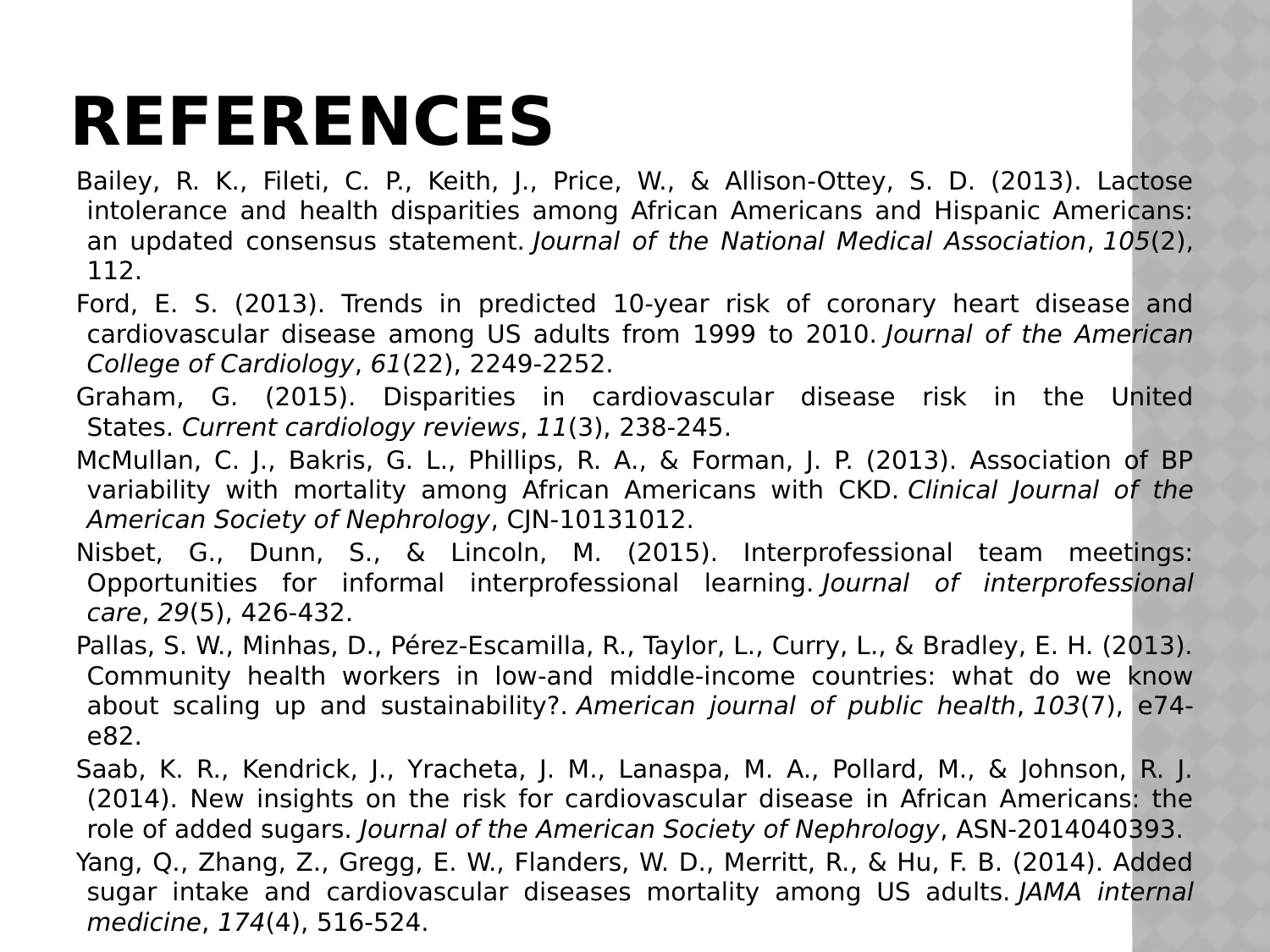






![[object Object]](/_next/static/media/star-bottom.7253800d.svg)